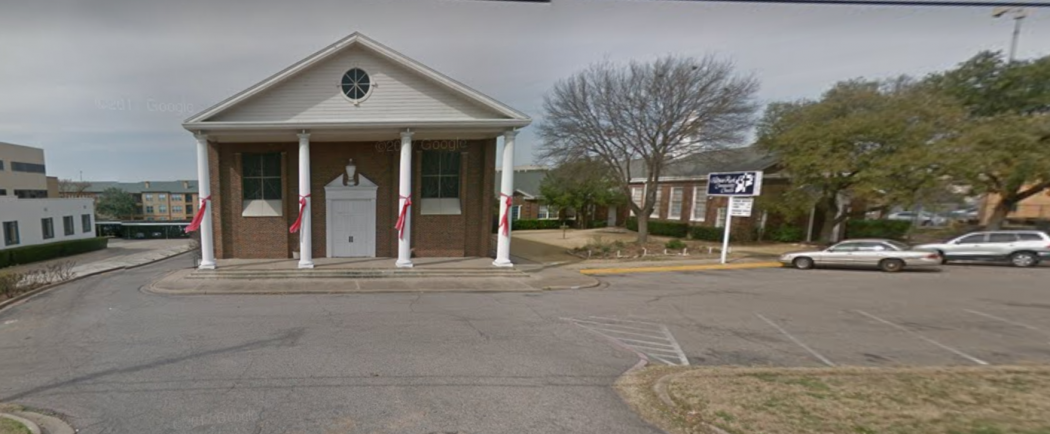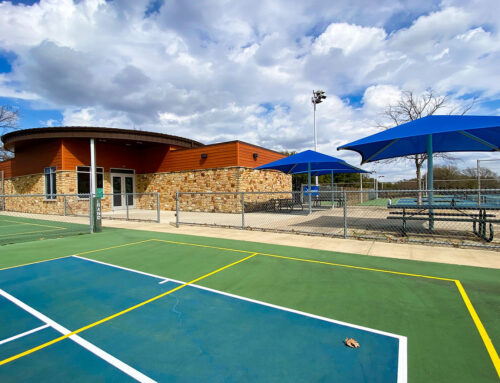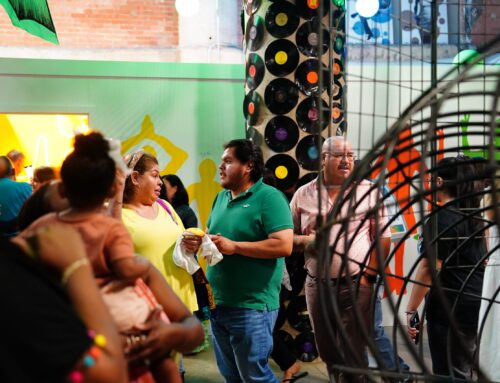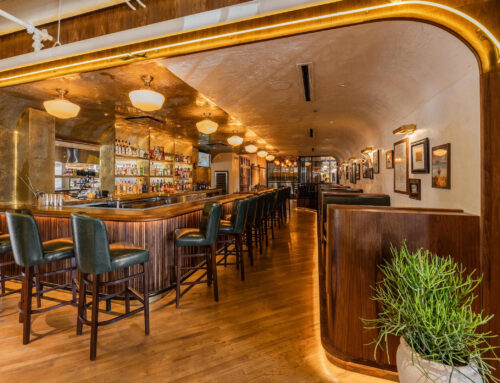
White Rock Community Church could be replaced with a high-density housing complex on Garland Road.
The neighbors around Garland Road are quick to tell you that they are not anti-development.
“We’re not like some East Dallas neighborhoods,” says Lou Simmons of Little Forest Hills. “We’re all for smart development.”
But that, of course, is completely subjective. What appeals to one neighbor, another might find totally off-putting, like the hotly debated Panera project. Garland Road neighbors do, however, seem united in their displeasure of Lennar Multifamily Communities’ plans to build a residential complex that rises from four-stories at the street level, up to seven-stories in back.
“This is being done to the neighborhood,” says Patricia Gaffney president of Lake Park Estates Neighborhood Association, “without any thoughtful neighborhood input.”
Neighbors plan to give their input when the project heads to the Dallas Plan Commission next Thursday, when commissioners will decide if the higher-density project is appropriate for the busy thoroughfare.
The land at 9353 Garland Road currently houses White Rock Community Church along with a medical office building at 9335 Garland Parkway. Originally, Lennar touted plans for a mixed-use project with retail on the ground floor and residential up top. Neighbors could get behind that idea because it promoted walkability. During a community meeting in March, Lennar indicated it was dropping all plans for retail.
“Their theory is retail won’t be successful,” says Anita Childress of Forest Hills.
At times, estimates ranged from 285-315 total apartments on the 4.33-acre site. Lennar did not respond to our calls for updated site plans or further information. Neighbors feel the number of units should be kept small.
“We believe [this project] would provide no real benefit to the neighborhood,” says Vail Fassett, president of the Little Forest Hills Neighborhood Association. “It will ruin the small-town feel of our neighborhood. And that’s why people move here, for that sense of community.”
Many are suspicious of Lennar’s authenticity when it seeks neighborhood input.
“They say, ‘Great, we’ll paint the building green instead of blue’ and call that neighborhood input,” says Patrick Blaydes of Little Forest Hills, who happens to be an urban planner by trade. “We reached out to [Lennar] and they didn’t want to consider our ideas.”
The neighbors know it might not be palatable to a national developer like Lennar, but they can’t help but pine for a project that would both be profitable and enhance the area. In general, they aren’t opposed to apartments, as long as it’s not a tall and looming building set right against the roadway.
“A developer can still make millions of dollars,” Blaydes says. He knows, he ran the numbers, although he admits it would be “a few” million each year in profit versus $10 million-$15 million.
In his ideal scenario, the church would be repurposed into a “Kessler-style theater.” The church hall is already equipped with a commercial kitchen, meaning it could become a “funky bar or restaurant,” he says.
“The congregation goes back to the 1800s, that’s something we should preserve,” Blaydes says. When it comes to developments, he’s most interested in “multipliers,” businesses that entice people to linger in the area by giving them the option to walk from, say, a nice dinner out to a live music venue.
Garland Road is becoming its own scene, drawing both unique independent businesses like Here Lounge, along with national chains like Chick-fil-A. With that added interest from businesses, neighbors have longevity in their eyes when they look down the street.
“We have to think of what this neighborhood will be in 20 years, 30 years or 50 years,” Blaydes insists.
That perspective, Councilman Mark Clayton says, is critical. While he thinks multifamily is an “appropriate use” for the property, he is not interested in signing off on a project that is largely unpopular.
“The look and feel and size need to reflect the neighborhood,” he says, “and what the people who live there want.”
Some neighbors have already made their voices heard behind the scenes, but plan to make it public during the project’s review next week. The plan commission meeting takes place at 1:30 p.m. on July 20 in council chambers.





